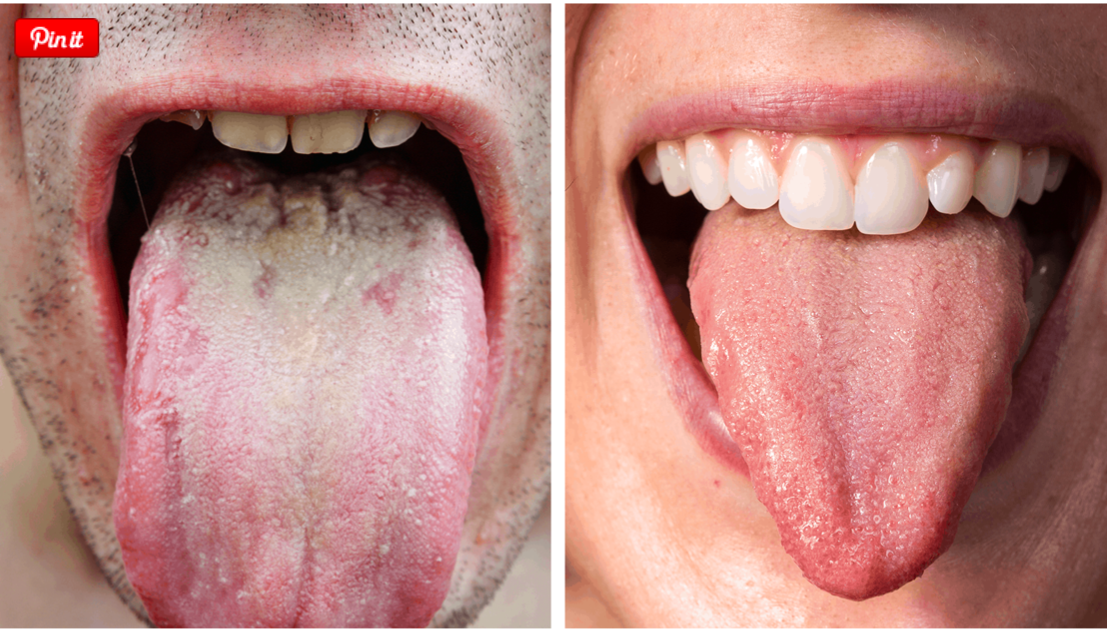“Any discoloration, lumps, sores or pain (of the tongue) should be monitored and evaluated by a medical professional if they don’t go away within two weeks.” – Dr. Daniel Allan, Family Physician at the Cleveland Clinic
“Say Ah…”
Ever wonder why doctors examine your mouth during a regular checkup? Well, when the doc asks you to say “Ah,” they’re glancing at your tonsils and tongue.
You may have noticed that this routine doesn’t take too long – a few seconds, usually. That’s because doctors can, with a glance, gain valuable insight by how the tongue appears.
If you think about it, the tongue is often overlooked. It’s not visible to others (mostly); we don’t pay it much attention unless we’re brushing it, and, the tongue just kind of sits.
The tongue, however, is crucial to our health and function. Without it, we couldn’t eat, drink, taste, chew or talk.
In this article, we’re going to discuss what your tongue can reveal about your health. As it turns out, it’s quite a lot.
Quick anatomy lesson
Our tongue doesn’t have “skin.” Instead, it’s covered with a pink, moist tissue (mucosa) and maintained by a large flow of blood. The mucosa and high blood content give the tongue it’s red-pink coloration.
The tongue’s color provides the most valuable information. As such, its coloration is what we’re going to focus on here.
WHAT DOES YOUR TONGUE SAY ABOUT YOUR HEALTH?
The tongue consists of three sections – the apex, body, and root. The apex is the tip; the body is the rest of the tongue extending back into the throat, and the root fixes the tongue to the mouth’s base.
Abnormal Colors
As mentioned, a healthy tongue always has a red-pink hue. Certain colors that may be considered unusual include:
– Black
– Blue
– Bright red
– Purple
– White
– Yellow
WHITE
A whitish tongue is by far the most common type of discoloration. It is often related to continued, poor oral hygiene. Other conditions that may cause whitening of the tongue include:
– Canker sores: visible white sores on the tongue. Canker sores often contain white to yellowish lesions at the center. Though painful, canker sores are usually rather harmless. Repeated cases, however, should be examined to test for possible underlying conditions.
– Leukoplakia: a condition associated with irritation of the tongue caused by chewing tobacco. The condition causes cells called mucous membranes to inflame. Discoloration is evident when the apex of the tongue or inner cheek of the mouth show whitish-grey patches.
– Oral thrush (candidiasis): manifests from a yeast called Candida albicans. This yeast creates white, creamy textured patches on the tongue’s surface. Thrush can happen to anyone, though people with suppressed immune system, the very young, and the elderly are especially at-risk.
BLACK
Strange looking as it may be, medical conditions don’t typically cause a black tongue. Sometimes, the tongue may appear black by elongation of the papillae, small bumps on it’s surface. Black tongue may be caused by certain OTC medications (e.g., antibiotics and bismuth), mouthwash products, lack of oral hygiene, or tobacco use.
BLUE
A tongue that looks blue should always be considered a medical emergency. As is the case with other parts of the body, the color blue often indicates a cutoff of blood somewhere.
A blue tongue may be a sign of cyanosis, a serious condition that disrupts oxygen supply to our tissue. Cyanosis may be caused by blood disorders, blood vessel diseases, or cardiac conditions.
BRIGHT RED
A bright red tongue may be due to a couple of things. Glossitis, or inflammation of the tongue, is the most common. A bright red tongue may also be a sign of nutrient deficiency. Family physician, Dr. Danial Allan, states “Folic acid and vitamin B-12 deficiencies may cause your tongue to take on a reddish appearance.”
More severe conditions include Scarlet fever, which causes the tongue to have a red and bumpy texture. Dr. Allan says, “If you have a high fever and a red tongue, you need to see your family doctor.” Scarlet fever can is easily treatable with the appropriate antibiotics.
PURPLE
A purplish tongue is uncommon compared to other tongue discolorations. There are two “usual suspects” for a purple tongue:
– Nutrient deficiency, particularly when we lack vitamin B2 (riboflavin).
– As a precursor to blue tongue, which is a potentially-severe medical condition. Thus, a person whose tongue exhibits purplish colors requires monitoring by medical staff until the color recedes.
A purple tongue may also be caused by certain diseases and requires examination by a licensed physician.
YELLOW
As with a purple tongue, yellow is a rare tint for the tongue. It usually precedes the growth of black tongue. Sporadically, a yellow tongue may be a symptom of jaundice – a medical condition causing yellowing or greenish pigmentation of the skin due to high bilirubin levels.
In closing
When brushing your pearly whites, make sure you do a quick check of your tongue. Cleaning your tongue by using a tongue scraper can eliminate some of the white stuff hanging around.
Also, take notice of any lumps, lesions or other strange growths. Sores that do not recede within a 14-day period should be examined by a doctor.

